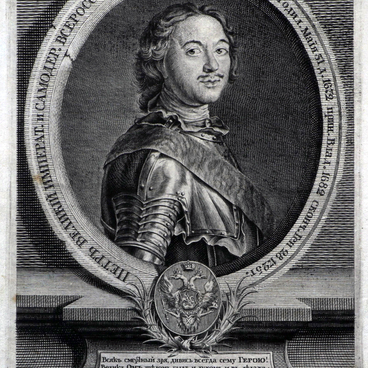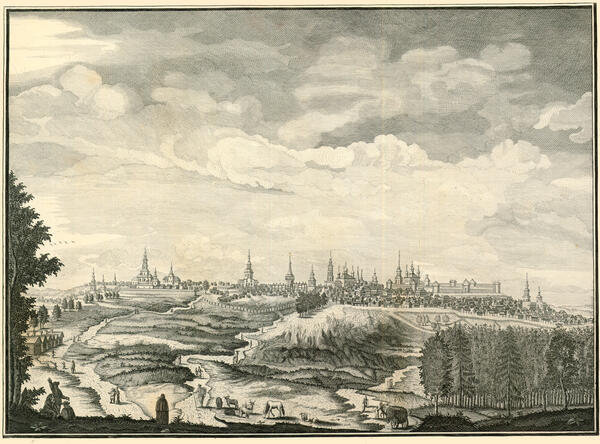Sergei Leontyevich Bukhvostov (1642/1659–1728) began his court service as a stable solicitor. At the age of 24, he “of the courtiers <…> was the first <…> to willingly join” the toy army of the eleven-year-old tsar Peter.
Bukhvostov participated in many of Peter’s campaigns against the Turks and Swedes. He was awarded a gold medal for valor shown in the Battle of Poltava. Only after sustaining a severe injury during the siege of Stettin, Sergei Leontyevich transferred to the garrison service in the rank of major.
In 1721, Peter the Great commissioned Carlo Rastrelli to cast a bust of the “first Russian soldier” in bronze, which was subsequently Russia’s first sculptural portrait and lifetime monument. During Anna Ioannovna’s reign, the currently lost sculpture was kept in the Kunstkamera. The artist Mikhail Makhaev (1718-1770) managed to engrave a portrait from it.
Mikhail Makhaev was the son of a priest. He began studying math and navigation at the Naval “Admiralty” Academy but at the age of thirteen, he was sent to the workshop at the Academy of Sciences. There he, as well as five other students, had to study the production of the newest and essential instrument for surveying the terrain — the theodolite.
Later, Mikhail was transferred to the workshop of Georg Johann Unverzagt to master cartography and lettering. At the same time, he took lessons from the Dutch engraver Ottmar Elliger and the Italian artist Bartolomeo Tarsia.
The Academy authorities rated the young artist as a high-class lettering specialist. In 1743, he took the place of Unferzagt as the head of the cartography and lettering workshop and began accepting students. In 1756, Makhaev was recognized as a master cartographer.
Over time, the artist was able to realize his talent as a draftsman and engraver. The master created many city landscapes, primarily of St. Petersburg and its environs. Although the drawings were intended for subsequent engravings, Makhaev completed only eight sheets.
Having personally known Sergei Bukhvostov, Makhaev described him as a man of “average height” who was “strong, firm, modest and very restrained” , and besides “being <…> piously meek in every possible way, he avoided publicity”. Under the portrait of Sergei Leontyevich, Mikhail Makhaev gave scattered and not particularly reliable biographical notes in Russian and French wanting to honor his memory.


